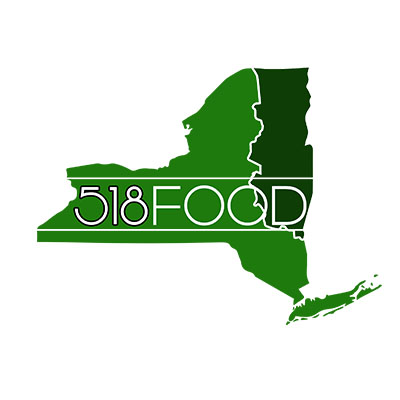Mission Statement
Open a PDF file of our mission statement.
518Food
There are so many things one could worry about. Pressing global challenges, the climate, refugees the
oceans, and politics. The Pandemic. Overwhelming if you try and take it all in. You know what I can
control? What I feed my family. Where I shop. It is so important and most people do not really
understand where their food comes from. I get it, convenience, access, cost and time are the most
important factor for most but your shopping dollar is a vote in the food system you want.
Most local, regional or small manufacturers are too small and don’t have enough volume to sell directly
to conventional supermarkets so the chains buy from Specialty Food Distributors who cover the country
with dozens of distribution centers. Being in the CPG (consumer packaged goods) world most my life, I
understand how this system evolved so you could get breadth and depth of choices; Asian, Thai, Tea,
Coffee and salsa all sit beside National brands like Tide, Crest and Prego that have slots in Golub or
Hannaford’s warehouses. The smaller brands like Casa Visco, Colavita, and Bigelow all use a National
network of Specialty Food Distributors to become a local, regional or national brand.
There has been much consolidation in our industry. Right now there are really only two main
distributors that cover the country, UNFI & KeHe. In the case of my 3rd generation family business, we
manufacture in Schenectady and the closest Distribution Center is Leigh Valley PA. Sauce that is made in
Schenectady gets picked up and send to PA and then comes back to supply local chains
I started 518Food, LLC to be a hyper local resource for locally made food products that are too small to
survive in a UNFI or KeHe. Getting product distributed to grocery stores in the 518 should be easier. We
have complicated our food system by relaying on ever increasing corporations that are just too big. This
was made clear during Covid, it was the local CoOp, the local independent, the IGA that picked up the
phone and increased their orders for sauce. It took almost 8 months for KeHe & UNFI to react to the
empty shelves.
Access to healthy local food should not be determined by your zip code, but in 2022 I think we can all
say we have a better understanding of inequities baked into the system. But why not let the
stakeholders have a say in how the resources gets distributed? Who has access, what are the best
practices now and where can we fill in the gaps?
Supporting local brands and locally grown food ensures more diversity. If people only shop for national
brands at conventional retailers like Target or Walmart Prego and Ragu will be the only brands available
to you. By the time you realize there are only options, Casa Visco will be a fond memory of how food
used to be. Neighborhood stores and particularly CoOps are part of the community, they support local
brands and growers and they put the planet before profits. If I only buy books at Amazon, the Open
Door Bookstore might not exist. Where you shop matters.
